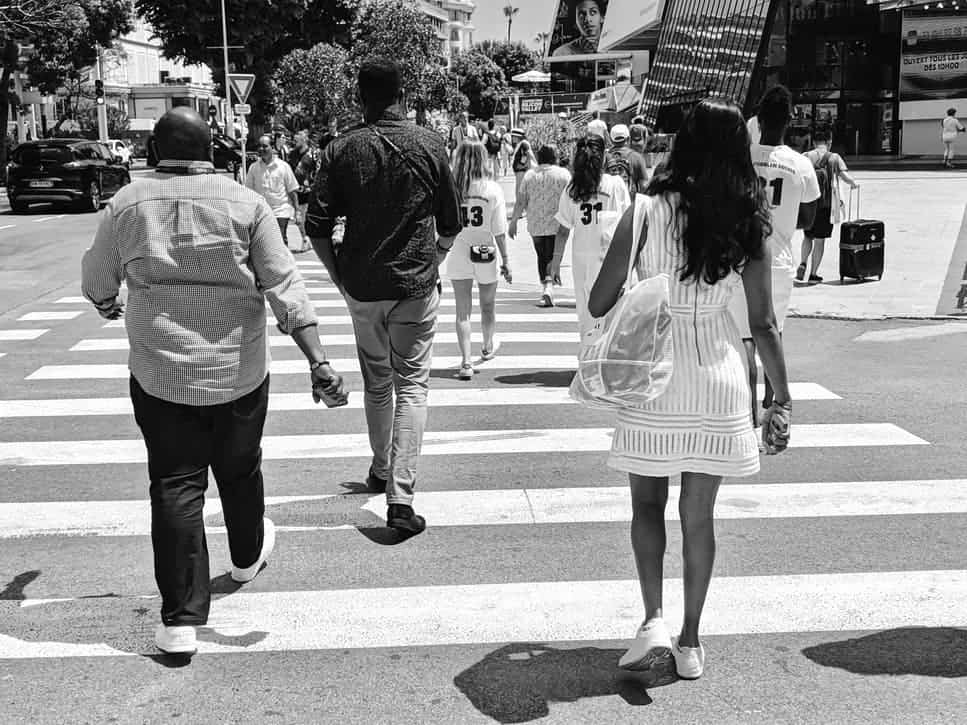In New York, data showed that black people make up 33% of COVID-19 hospitalizations. Yet black people make up just 18% of the state’s population, so this minority is affected in a heavily disproportionate way.
Furthermore, early hospital data from New York City suggests that black people are twice as likely to die from COVID-19 than white people. The CDC also reported that, in New York City, death rates are significantly higher for Hispanics/Latinos than for white people.
Which begs the question: why are minorities more at risk from the disease?

New York isn’t an outlier in this regard. In Louisiana, 70% of fatalities were among black people — for a population that’s only about a third black. In Illinois, 15% of the population is black, but 43% of fatalities were within this small population. The parallel continues for many other states.
It’s not just black people, either: the Navajo Nation has a population of under 300,000 people in New Mexico, Arizona, and Utah — less than 5% of these states’ population. But they make up over 20% of the total number of cases.
“We found that there were large disparities in the proportion of people at risk of COVID-19 from minority and low-income populations,” said study co-author Julia Raifman. She’s an assistant professor of health law, policy and management at the Boston University School of Public Health.
Raifman believes that decades of disparities in income, housing, education, and jobs have made a large impact on minorities’ risk of disease, and ethnicity may be an important factor affecting COVID-19 outcomes. This is not a new issue, but the pandemic is bringing all these issues to light.
“COVID pandemic has really shined a spotlight on the discrepancies in health care outcomes for people of color and of lower socioeconomic status, and this study raises some very valid points about those discrepancies,” says Dr. Gary LeRoy, president of the American Academy of Family Physicians, who was not involved with the study.
Health and income
The new study, spearheaded by Raifman, looked at different COVID-19 health risk factors, reviewing 2018 data including 330,000 people from a nationally representative group.
They found that about 43% of all American adults have at least one COVID-19 risk factor, and 18% have two or more risk factors. When they looked at people under 65, they found one risk factor in 33% of black adults, 42% of Native American adults, and 27% of white adults — hardly enough to justify the differences observed in COVID-19 vulnerability. Instead, it was social rather than medical inequalities that seem to correlate with COVID-19 risk.
In people under 65, low-income adults are almost twice as likely to have one or more risk factors, and, in general, low income seems to correlate with COVID-19 risk.
Another risk factor might be represented by other inequalities, such as living standards. Living in crowded, multigenerational homes, makes it far more likely to contract the disease. Having jobs that cannot be done remotely and using public transportation to get to work can also contribute to a higher risk. In the case of the Navajo Nation, about 30% of the homes in the reservation don’t have running water, which makes regular hand-washing challenging, the researchers note.
Overall, while it’s hard to put a finger on one culprit, major social inequities manifest themselves racially, and these inequities contribute to a higher risk of disease. This is true always but is especially glaring in the context of this pandemic.
LeRoy, who was not involved with the study, highlighted another problem: lack of access to healthcare. In the earlier stages of the disease (and to a lesser extent, even now), you needed a doctor’s referral to get a COVID-19 test. That means that if you don’t have health insurance, you need to pay for a doctor’s visit to get the referral — assuming you even get it. While this was not addressed in the study, preliminary reports suggest that black people were less likely to be referred for testing. Then, even assuming that everything goes right, it might still be realistically impossible to quarantine yourself living in a shared home — and if you’re living month to month, you might not even be able to afford to self-quarantine.
This wide gap in healthcare availability and living conditions is a potential driver of racial disparities. LeRoy expressed hope that this can be addressed
“I hope we emerge from this pandemic as a smarter global community, but we have to address these glaring health discrepancies,” LeRoy said. One place to start might be making antibody testing more widely available. Antibody tests can show whether or not you’ve had the COVID-19 infection, but it’s not yet clear if that also means that you cannot be reinfected. He said the test is available in some areas, but may not be easily accessible for some, and the cost is $65. You don’t need a doctor’s referral for this test, but a lot of people can’t pay the $65,” LeRoy said.
This is also important to consider for lockdown relaxation. This will, almost undoubtedly, lead to an important rise in cases — which may very well also disproportionately affect minorities. Any responsible policy must consider this and tailor solutions to care for the communities most at risk.
Learn more about how COVID-19 infections affect minorities from the U.S. Centers for Disease Control and Prevention


